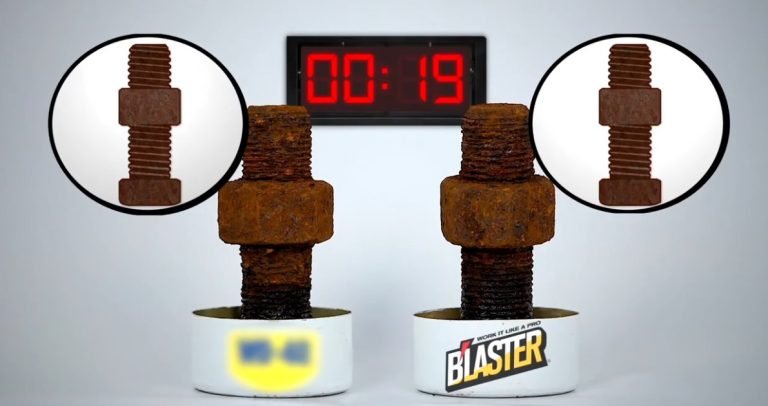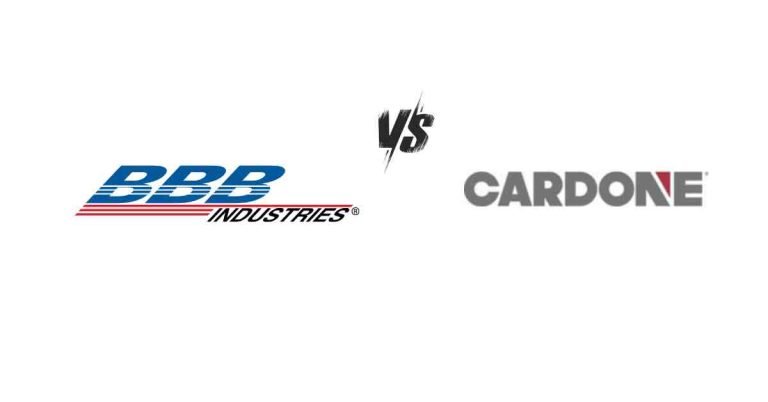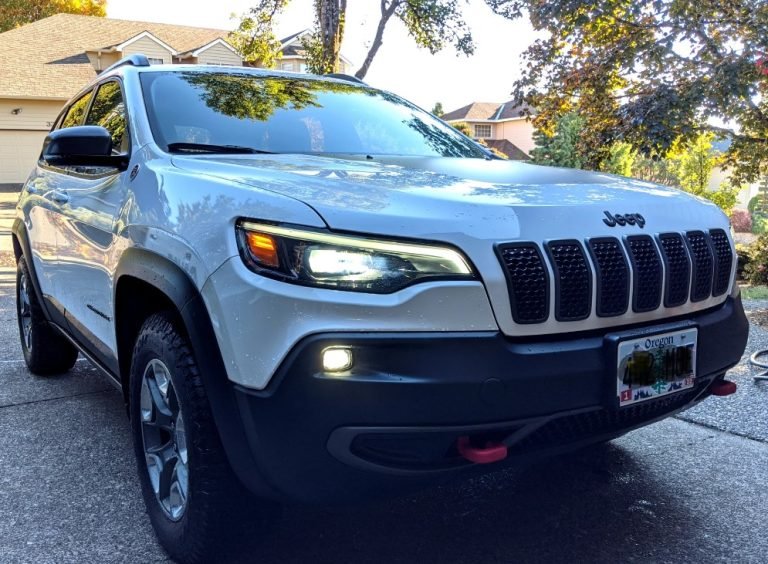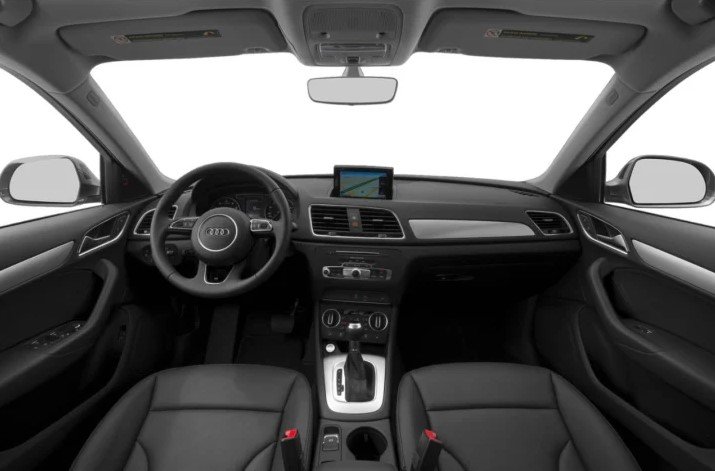2004 Toyota Highlander Problems: Common Issues And Solutions
The 2004 Toyota Highlander is a popular mid-size SUV that has been praised for its spacious interior, comfortable ride, and reliability. However, like any other vehicle, it is not without its problems
So, what are the 2004 Toyota Highlander problems that have been reported? The worst complaints are related to the engine, AC/heater, and transmission. This 2004 Toyota Highlander had 5 recalls, including one for loose retaining clips on the driver’s side forward center console
However, let’s take a closer look at some of the most common problems reported by owners of the 2004 Toyota Highlander and some tips on how to address these issues.
2004 Toyota Highlander Problems: An Overview
Here are a few common problems reported by owners of the 2004 Toyota Highlander. The table presents the list followed by common causes and potential solutions.
| SN | Problem | Causes | Potential Solutions |
|---|---|---|---|
| 1 | Excessive Oil Consumption | Worn piston rings Faulty valve stem seals PCV system malfunction | Replace piston rings Replace valve stem seals Clean or replace the PCV valve |
| 2 | Engine Misfires and Rough Idling | Faulty ignition components Fuel delivery issues Air intake system problems | Replace spark plugs and ignition coils Clean or replace fuel injectors for easy flow Clean or replace the air filter, throttle body, or MAF sensor |
| 3 | Transmission Issues | Worn clutch components Low transmission fluid Transmission control module (TCM) issues | Replace the clutch disc, pressure plate, or flywheel Perform a fluid flush, and refill or top it up Professional diagnosis, potential reprogramming, or replacement |
| 4 | Power Steering Fluid Leaks | Damaged power steerings components, such as hoses or seals | Replace damaged components |
| 5 | Suspension Noise | Sway bar links or bushings | Replace worn-out parts |
| 6 | Air Conditioning Problems | Refrigerant leaks, electrical issues | Repair refrigerant leaks Address every electrical problem promptly |
| 7 | Brake System Difficulty | Worn brake pads Warped brake rotors | Replace brake pads Address brake system issues |
| 8 | Airbag and Check Engine Light | Problematic center airbag sensor Hose off of the air filter housing | Replace the center airbag sensor Reattach the hose to the air filter housing |
| 9 | Blower Motor Issues | Blown fuse Bad relay Bad electrical connector | Replace the blown fuse with a new one Replace the bad relay with a new one Replace the bad electrical connector |
2004 Toyota Highlander Common Problems, Causes and Solutions
Now, let’s dive into the detailed about 2004 Toyota highlander common issues with their possible causes and solutions.
- Excessive Oil Consumption
Some owners have reported higher-than-normal oil consumption in the 2004 Highlander. This can lead to the need for more frequent oil top-ups and potential engine issues if not addressed.
Causes
- Worn Piston Rings
- Valve Stem Seals
- PCV System Malfunction
Solutions
- Replacing the piston rings can help resolve this issue. Here are the steps to replace the piston rings.
Step 1: Take the engine out of the vehicle. This is complicated and time-consuming operation that necessitates the use of specialized instruments and experience. This step should be performed by an experienced mechanic.
Step 2: To reach the pistons and rings, remove the cylinder head, oil pan, and other components.
Step 3: Compress the rings with a piston ring compressor before removing the piston from the engine block.
Step 4: Remove the old piston rings from the piston using a piston ring expander tool.
Step 5: Apply oil to the new piston rings and put them onto the piston. Ascertain that the rings are properly aligned and spaced in accordance with the manufacturer’s instructions.
Step 6: Replace the pistons. Compress the rings with a piston ring compressor before reinstalling the piston in the engine block. Check that the piston is correctly positioned and seated in the cylinder bore.
Step 7: Replace the cylinder head, oil pan, and other parts removed. Check that all bolts and fasteners are tightened according to the manufacturer’s specifications.
Step 8: Install the engine again. This is the inverse of step 1 and necessitates the use of specific instruments and knowledge. This step should be performed by a trained mechanic.
- Cleaning the PCV valve and associated components.
Here are the steps to clean the PCV valve.
Step 1: Locate the PCV valve. It is usually located on the valve cover or intake manifold
Step 2: Remove the PCV valve. Use pliers to remove the hose clamp and then pull the hose off the valve. Use a socket wrench to remove the valve from the engine
Step 3: Inspect the valve. Check for any signs of damage or wear. If the valve is dirty or clogged, it can be cleaned instead of replaced
Step 4: Clean the valve. Soak the valve in a container of carburetor cleaner or brake cleaner for about 30 minutes. Use a small brush to scrub away any dirt or debris. Rinse the valve with clean water and let it dry completely
Step 5: Reinstall the PCV valve. Insert the cleaned valve into the engine and tighten it with a socket wrench. Reattach the hose and secure it with a hose clamp
Step 6: Test the PCV valve. Start the engine and check for any leaks or abnormal noises. If everything looks good, you have successfully cleaned the PCV valve
- Replacing the valve stem seals.
Here are the steps to replace the valve stem seals for a 2004 Toyota Highlander.
Step 1: Remove the valve cover. Use a socket wrench to remove the bolts that secure the valve cover to the engine. Lift the cover off the engine and set it aside
Step 2: Remove the spark plugs. This will make it easier to turn the engine over when compressing the valve springs
Step 3: Compress the valve springs. Use a valve spring compressor to compress the valve springs and remove the keepers that hold the valve in place
Step 4: Remove the old valve stem seals. Use pliers to carefully remove the old valve stem seals from the valve stems
Step 5: Install the new valve stem seals. Lubricate the new valve stem seals with oil and slide them over the valve stems. Use pliers to press them into place
Step 6: Reinstall the valves. Use the valve spring compressor to compress the valve springs and reinstall the keepers. Release the compressor and repeat for the remaining valves
Step 7: Reinstall the valve cover. Clean the valve cover and engine surface, then install a new valve cover gasket. Reinstall the valve cover and tighten the bolts to the manufacturer’s specifications using a torque wrench
Step 8: Reinstall the spark plugs. Tighten them to the manufacturer’s specifications using a torque wrench
- Engine Misfires and Rough Idling
There have been instances where the engine of this Highlander may experience misfires, causing a noticeable decrease in performance and rough idling.
Causes
- Faulty ignition coils
- Fuel delivery issues
- Air intake system problems
- Spark plugs, or fuel injectors
Solutions
- Replace the injectors.
Follow the steps to do that.
Step 1: Disconnect the fuel pump fuse or relay and start the engine. Let it run until it stalls, then turn off the ignition
Step 2: Use a fuel line disconnect tool to disconnect the fuel lines from the fuel rail
Step 3: Use a socket wrench to remove the bolts that secure the fuel rail to the engine. Lift the fuel rail off the engine and set it aside
Step 4: Use a socket wrench to remove the bolts that hold the injectors in place. Pull the injectors out of the engine
Step 5: Lubricate the O-rings on the new injectors with oil and insert them into the engine. Tighten the bolts to the manufacturer’s specifications using a torque wrench
Step 6: Place the fuel rail onto the engine and tighten the bolts to the manufacturer’s specifications using a torque wrench
Step 7: Use a fuel line disconnect tool to reconnect the fuel lines to the fuel rail
Step 8: Start the engine and check for any leaks or abnormal behavior. If everything looks good, you have successfully replaced the fuel injectors.
- Replace the Worn-out spark plugs, and ignition coils at recommended intervals for proper combustion and smooth idling.
- Replace the Mass Air Flow (MAF) sensor components to help restore proper airflow and combustion.
And this is the process of replacing the Mass Air Flow (MAF) Sensor. It is usually located on the air intake hose or air filter box
- Press the tab and pull the connector off the sensor
- Use a screwdriver or socket wrench to remove the screws or bolts that hold the sensor in place. Lift the sensor off the air intake hose or air filter box
- Place the new sensor onto the air intake hose or air filter box and tighten the screws or bolts. Reconnect the electrical connector
- Start the engine and check for any warning lights or abnormal behavior. If everything looks good, you have successfully replaced the MAF sensor
3. Transmission Failures
This includes rough shifting and slipping gears and delayed engagements. These issues make driving the Highlander a less smooth and uncomfortable driving experience. Addressing these issues promptly is crucial to prevent further damage.
Causes
- Worn Clutch Components
- Low Transmission Fluid
- Faulty Shift Solenoids
- Transmission Control Module (TCM) Issues
- Low Transmission Fluid Level
Solution
- Replace worn clutch components to restore proper clutch operation and resolve the issue.
Here are the steps to do that.
Step 1: Remove the transmission. This is a complex and time-consuming process that requires specialized tools and expertise. It is recommended to have a certified mechanic perform this step
Step 2: Remove the clutch assembly. Use a socket wrench to remove the bolts that secure the clutch assembly to the flywheel. Lift the clutch assembly off the flywheel and set it aside
Step 3: Inspect the flywheel. Check for any signs of damage or wear. If the flywheel is damaged or worn, it should be resurfaced or replaced
Step 4: Replace the clutch components. Make sure the new components are properly aligned and spaced according to the manufacturer’s specifications
Step 5: Reinstall the clutch assembly. Place the new clutch assembly onto the flywheel and tighten the bolts to the manufacturer’s specifications using a torque wrench
Step 6: Reinstall the transmission. This is the reverse of step 1 and requires specialized tools and expertise. It is recommended to have a certified mechanic perform this step
Step 7: Test the new clutch components. Start the engine and engage the clutch. Check for any slipping, grinding, or abnormal behavior. If everything looks good, you have successfully replaced the worn clutch components.
- Check the fluid level regularly and perform a transmission fluid flush to refill.
These are the steps to perform the task.
Step 1: Gather the necessary tools and materials. You will need a transmission fluid flush machine, a drain pan, a funnel, and the appropriate type and amount of transmission fluid
Step 2: Start the engine and let it run for a few minutes to warm up the transmission fluid
Step 3: Use a socket wrench to remove the drain plug and drain the old transmission fluid into a drain pan
Step 4: Reinstall the drain plug. Tighten it to the manufacturer’s specifications using a torque wrench
Step 5: Connect the transmission fluid flush machine. Follow the manufacturer’s instructions to connect the machine to the transmission fluid cooler lines
Step 6: Flush the transmission fluid. Turn on the engine and the flush machine. The machine will pump new transmission fluid into the transmission while simultaneously pumping out the old fluid. Continue until the fluid coming out of the machine is clean and clear
Step 7: Tighten it to the manufacturer’s specifications using a torque wrench
Step 8: Use a funnel to pour the appropriate amount of new transmission fluid into the transmission through the transmission fluid dipstick tube. Check the fluid level with the dipstick and add more fluid as needed
Step 9: Start the engine and shift through all the gears. Check for any slipping, grinding, or abnormal behavior. If everything looks good, you have successfully performed a transmission fluid flush
- Replace the faulty solenoids
- Professional diagnosis and potential reprogramming or replacement of the TCM may be required. It is recommended to have a certified mechanic perform this task.
However, here is the process to do that.
- Check for warning lights. If the TCM is malfunctioning, it may trigger the check engine light or other warning lights on the dashboard. Use an OBD-II scanner to retrieve any diagnostic trouble codes (DTCs) that may be stored in the TCM
- Check for transmission problems. A malfunctioning TCM can cause a variety of transmission problems, such as slipping, shifting issues, or failure to engage. If you notice any of these symptoms, it may be a sign of a bad TCM
- Check the wiring and connections. Inspect the wiring and connections between the TCM and other components in the transmission system. Look for any signs of damage or corrosion. Make sure all connections are secure and properly seated
- Test the TCM. Use a multimeter to test the TCM for proper voltage and continuity. Follow the manufacturer’s instructions and specifications for testing the TCM
- Replace the TCM. If the TCM is found to be faulty, it will need to be replaced. Follow the manufacturer’s instructions for replacing the TCM. Make sure to properly program and calibrate the new TCM to ensure proper operation
4. Power Steering Fluid Leaks
This can be a frustrating problem and makes steering the vehicle extremely challenging and potentially unsafe. It involves difficulty in steering and even a complete loss of power steering assistance. The steering feels heavier, making it more challenging to maneuver the vehicle.
Causes
- Faulty Power Steering Pump
- Damaged Power Steering Hose
- Loose or faulty connections
- Seal or gasket failure
- Power steering rack leak
Solution
- Ensure proper diagnosis and replacement of the damaged hose. If you aint sure of proper fixing of this issue it is advisable to have a professional mechanic handle the task.
Diagnosis of damaged power steering hose
- Inspect the power steering system for leaks. Look for wet spots or puddles of power steering fluid under the vehicle or on the power steering components
- Check the power steering fluid level. If the fluid level is low, it may be a sign of a leak in the power steering system
- Turn the steering wheel and listen for any unusual noises. A damaged power steering hose may cause whining or groaning noises when the steering wheel is turned
- Check the power steering hoses for damage or wear. Look for cracks, bulges, or other signs of damage on the power steering hoses
Replacement of damaged power steering hose
- Locate the damaged power steering hose. The power steering hoses are typically located near the power steering pump and steering rack
- Remove the damaged power steering hose. This may involve removing clamps or other components that are holding the hose in place
- Install the new power steering hose. Make sure to use an OEM Toyota part for the replacement. Follow the manufacturer’s instructions for installing the new hose
- Refill the power steering fluid. After replacing the power steering hose, refill the power steering fluid to the proper level. Follow the manufacturer’s instructions for checking and filling the power steering fluid
- Bleed the power steering system. After replacing the power steering hose and refilling the power steering fluid, it is important to bleed the power steering system to remove any air pockets. Follow the manufacturer’s instructions for bleeding the system
- Follow proper torque specifications of when tightening connections to prevent future leaks.
Here are steps to follow when tightening forproper torque specification
Step 1: Consult the owner’s manual or a repair guide for the specific torque specifications for the component being installed or tightened. The torque specifications may vary depending on the year, model, and component being installed on your Toyota Highlander
Step 2: Use a torque wrench to tighten the bolts or nuts to the specified torque value. Do not over-tighten or under-tighten the connections, as this can cause damage or leaks
Step 3: Tighten the bolts or nuts in a criss-cross or star pattern to ensure even distribution of torque. Also, do it to prevent warping or distortion of the component being installed or tightened
Step 4: Clean the surfaces and use new gaskets or sealant as recommended by the manufacturer to ensure a proper seal and prevent leaks
Step 5: Double-check the torque values after tightening to ensure they are within the specified range. This can help prevent leaks and ensure proper operation of the component
- Repair or replacement of the power steering rack if needed. Repairing the power steering system can be a complex and time-consuming process that requires specialized tools and expertise. It is recommended to have a certified mechanic perform this task.
- Brake System Difficulties
Some owners have experienced problems with the brakes, including squealing noises, vibrations, or reduced braking performance. These issues can affect the ride comfort and stability of the vehicle.
Causes
- Worn-out brake pads
- Glazed brake pads or rotors
- Warped brake rotors
- Uneven brake pad deposits
- Worn-out brake pads or shoes
- Brake fluid leaks or air in the brake system
Solutions
- Ensure proper installation and lubrication of brake components to prevent squealing noises.
- Have the brake rotors inspected for warping. If they are within the acceptable tolerance, they can be resurfaced to restore their smoothness. If they are severely warped, replacement may be necessary.
- The brake pads should be replaced for uneven brake pad deposits that are causing vibrations.
- If the brake pads and rotors appear glazed, have them resurfaced or replaced as necessary.
- The brake system should be properly cleaned and lubricated.
- Repair any leaks and perform a brake fluid flush and bleed if necessary.
- Suspension Noise
Owners have reported hearing clunking or rattling noises coming from the front suspension of the 2004 Highlander. Suspension noise when going over bumps, and premature wear of suspension components have been reported.
Causes
- Worn-out struts
- Sway bar links or bushings
Solution
- Replace any worn-out or damaged suspension parts as recommended by the technician.
- Ensure proper installation and tightening of all components to prevent future noise issues.
- Regularly lubricating suspension components.
- Air Conditioning Problems
Air conditioning issues can be inconvenient, especially during hot weather. It leads to weak cooling or complete failure. The cooling performance may be insufficient or the system may fail to provide any cool air at all.
Causes
This can be due to
- Refrigerant leaks
- Malfunctioning compressors
- Electrical problems
Solution
- If a refrigerant leak is detected, have the system repaired and recharged with the correct amount of refrigerant.
- Regularly change the cabin air filter and schedule periodic air conditioning system inspections.
- Repair or replace faulty compressor components.
- Repair or replace any detected electrical components.
Blower Motor Issues
The blower motor in the 2004 Toyota Highlander is an essential component of the climate control system that circulates hot or cold air throughout the cabin. When this component fails, it can lead to a lack of airflow or uncomfortable temperature inside the vehicle.
Causes
- Blown fuse
- Bad relay
- Resistor or control module malfunction
- Faulty blower motor
- Bad electrical connector or broken wire
Solution
- Replace the blown fuse with a new one.
Here are the steps to do that.
Step 1: Locate fuse box in the 2004 Toyota Highlander. It is typically located in the engine compartment or under the dashboard on the driver’s side.
Step 2: Look for a fuse that has a broken or melted metal strip inside.
Step 3: Turn off the ignition and any electrical devices associated with the circuit.
Step 4: Using a fuse puller tool or a pair of needle-nose pliers, grasp the blown fuse firmly and pull it straight out of its socket.
Step 5: Take a new fuse of the same amperage rating and insert it into the empty fuse socket.
Step 6: Reconnect the power source, such as the vehicle’s battery.
Step 7: Turn on the ignition and test the circuit or device associated with the replaced fuse to ensure it is functioning correctly.
Step 8: Replace the Fuse Box Cover
- Replace the bad relay with a new one.
Follow the steps below.
Step 1: Check the owner’s manual or the relay box cover for a diagram of the relay box and the location of the relays
Step 2: Turn off the vehicle is turned off and the key is removed from the ignition
Step 3: Locate the relay which is in the engine compartment or under the dashboard on the driver’s side of the vehicle
Step 4: Depending on the location of the relay box, the cover may need to be removed by pressing a tab or unscrewing a bolt
Step 5: Look for the relay that corresponds to the component that is not working. The relay will have a label indicating its function
Step 6: Use your fingers or a pair of pliers to pull the bad relay out of the relay box
Step 7: Make sure to use a relay with the same part number as the bad relay. Insert the new relay into the same slot as the bad relay
Step 8: Secure the cover back onto the relay box
Step 9: Turn on the vehicle and test the component to make sure it is working properly.
- Replace the malfunctioning resistor or control module with a new one.
- Replace the faulty blower motor with a new one.
- Repair or replace the bad electrical connector or broken wire.
Here are the steps to repair bad electrical connector in 2004 toyota highlander
Step 1: Make sure the vehicle is turned off and the key is removed from the ignition
Step 2: Locate the blower motor under the dashboard on the passenger side of the vehicle
Step 3: Look for any signs of damage or wear on the electrical connector for the blower motor
Step 4: Use your fingers or a pair of pliers to disconnect the electrical connector from the blower motor
Step 5: Use a wire brush or a small piece of sandpaper to clean the electrical connector. This will help to remove any corrosion or debris that may be causing the connection to fail
Step 6: Reconnect the electrical connector. Make sure the connector is securely attached to the blower motor
Step 7: Turn on the vehicle and test the blower motor to make sure it is working properly. If the blower motor still does not work, it may indicate a larger electrical problem that requires further diagnosis
How to Troubleshoot 2004 Toyota Highlander Problems?
- Identify the specific problem or symptoms you are experiencing.
- Research known issues or recalls for the 2004 Toyota Highlander.
- Consult the owner’s manual for guidance on troubleshooting.
- Check basic components: fuses, fluid levels, battery condition, and connections.
- Use an onboard diagnostic (OBD) scanner to retrieve error codes.
- Conduct visual inspections for loose connections, damaged wires, or signs of leakage or corrosion.
FAQs
Some questions people also ask about 2004 Toyota Highlander problems and answers to them.
Q: How reliable is the 2004 Toyota Highlander?
The 2004 Toyota Highlander is a highly reliable mid-size SUV with an overall rating of 8/10 in terms of reliability. Many drivers have reported being able to go up to 250,000 miles without any major repairs.
Q: What’s the worst year for a Toyota Highlander?
The 2008 Highlander, the first year of the 2nd Generation, has the highest number of complaints compared to any other Highlander on this list. Most of the complaints were from owners who experienced various engine problems.
Q: What is the 2004 Toyota Highlander transmission?
The 2004 Toyota Highlander has two different transmission options depending on the engine type. The 4-cylinder engine is paired with a 4-speed automatic transmission, while the V6 engine is paired with a 5-speed automatic transmission.
Final Words
Hopefully, by now, I believe we’ve been able to enlighten you on the problems of the 2004 Toyota Highlander. The issues include engine, and transmission difficulties, power steering fluid leaks, suspension noise, and air conditioning problems.
Regular maintenance and timely repairs are crucial to keep your Highlander running smoothly and safely. By addressing these issues promptly and seeking professional assistance for accurate diagnosis and resolution, you can ensure the optimal performance of your vehicle.







